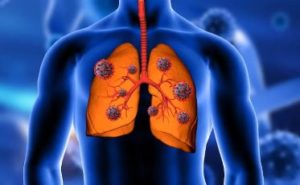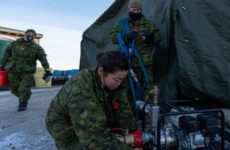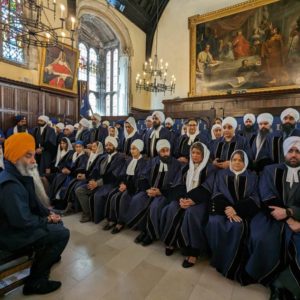
Lung cancer is the most common cancer in men in India and the second most common overall. Approximately 75,000 new lung cancer cases are diagnosed every year in our country.
Out of these, 50,000 cases are seen in men and 25,000 cases are seen in women ( data as per WHO GLobocan 2022). Overall lung cancer accounts for approximately 5.6% of all new cancers that are diagnosed and is responsible for 8.1% of all cancer-related deaths. Importantly, the incidence of lung cancer is increasing, even in women and non-smokers.
The risk factors for getting lung cancer include smoking, passive smoking( where a person herself/ himself doesn’t smoke but is exposed to smoke exhaled by other smokers in close vicinity) air pollution and suppressed immunity. Lung cancer can occur in patients who have chronic inflammatory conditions and a family, history of lung cancer. Smoking is responsible for nearly 80 to 90% of all lung cancers.
According to Dr Devavrat Arya, Director of Cancer Care / Oncology, Musculoskeletal Oncology, Medical Oncology, Thoracic Oncology, Head & Neck Oncology, Breast Cancer, Molecular Oncology & Cancer Genetics, Max Super Speciality Hospital, Saket, lung cancer is not one disease. There are broadly two groups of lung cancers. some of them are called small cell lung cancers which account for 20% of all lung cancers, The remaining 80% are classified as non-small cell lung cancer which is a motley group of different types that include adenocarcinoma, squamous cell carcinoma, large cell carcinoma etc. It’s important to distinguish between various sub-types of lung cancer as the method of treatment and chances of cure vary depending on the type.
Common symptoms of lung cancer include persistent cough, breathing, difficulty, change in voice, and blood in sputum. More advanced cancer may be associated with pain in the chest, loss of appetite, weight loss and swelling in the neck and other parts of the body.
There are significant challenges in early diagnosis as Lung cancer symptoms can be mimicked by Tuberculosis which is still a major public health problem in India4. Due to this and various other factors only 15 % are present in the early stage when surgery can be curative.
On initial suspicion of lung cancer, an ideal test to be performed is a CT scan of the chest. If a suspicious lesion is identified then the next step is to undertake a biopsy which can be a needle biopsy or a bronchoscopy-guided biopsy. The biopsy is essential not only to confirm the presence of cancer but also to understand the exact subtype of lung cancer. On confirmation of cancer, a PET CT scan is usually undertaken to define the stage of the disease.
The treatment of lung cancer depends on the exact subtype of the cancer, the stage of the disease, the age and general fitness levels of the patient and importantly the choice of the patient.
A small cell lung cancer is usually divided into broadly two stages. When the cancer is confined to the lung and the lymph nodes, it’s called a limited-stage disease and the treatment that is undertaken usually involves radiation therapy along with chemotherapy. Small cell lung cancers that have extensively extended beyond the long are usually treated with chemotherapy. In the past few years, emerging research and data suggest that immunotherapy can be added to chemotherapy which can result in not only in more effective control of symptoms. but also longer survival.
Non-small cell lung cancers are divided into four stages. The standard treatment for stage one and stage two includes a surgical resection. Not all surgeries need to be open surgeries, some of these can be undertaken through minimal access techniques like Video-assisted thoracoscopic surgeries. Robotic surgeries are now being increasingly undertaken for resection of lung cancers. These minimally invasive techniques not only ensure effective removal of cancer but also ensure that the surgery is less risky and the patient can be discharged quickly. A significant number of these patients will be candidates for chemotherapy after surgery, the aim of which is to reduce the chance of recurrence and improve survival. Now all the patients who undergo successful surgeries are also advised high-end molecular tests like EGFR mutation testing and PDL 1. For those patients where either of these tests is positive, emerging evidence suggests that the addition of targeted therapy or immunotherapy will further improve outcomes.
A small number of patients with stage l/ll lung cancers who are not medically fit for surgery can benefit from radiation including Stereotactic Radiosurgery.
Stage III is treated with a combination of chemotherapy- immunotherapy, surgery, radiation and further immunotherapy. There is robust data now to suggest that the benefits of radiation and chemotherapy for stage III lung cancers that are not respectable are further enhanced with the addition of 1 year of immunotherapy.
There have been significant changes in the way treatment is undertaken in the state |V lung cancers. While chemotherapy has remained the backbone of treatment for this stage, there have been significant advances in the past decade.
Most of these patients are subjects to tests that do molecular profiling of the tumour using a test called NGS. With the advent of these tests, the approach to treatment has shifted from a ‘ one size fits all’ to a more personalised treatment. While a biopsy tissue used to be essential for this test, now even a blood sample can be used for the same. Based on this test 20-40% of patients will have a genetic alteration that can be treated with a targeted therapy. These patients don’t usually need chemotherapy, and the targeted therapy is not only more effective but also safer. In addition, immunotherapy has added to the improved outcomes. The currently used immunotherapy medications are injectable drugs that re-activate the body’s immune cells which in turn kill the tumour cell. Immunotherapy when used alone in select cases or when added to chemotherapy now ensure that patient not only live longer but also with a better quality of life.
With the emerging advances in treatment, it’s important that treatment is done in experienced centres and decisions are taken in multidisciplinary tumour boards with the participation of not only surgical, medical, and radiation oncologists but also chest specialists, pathologists and physiotherapists.
Even patients with advanced lung cancers are leading long productive lives with good quality. Ongoing research into tumour vaccines, newer targeted therapy and other immunotherapy drugs means that the average survival will only increase further across all stages.




 Man gets life imprisonment for murdering teenage Indian wife in London
Man gets life imprisonment for murdering teenage Indian wife in London





























